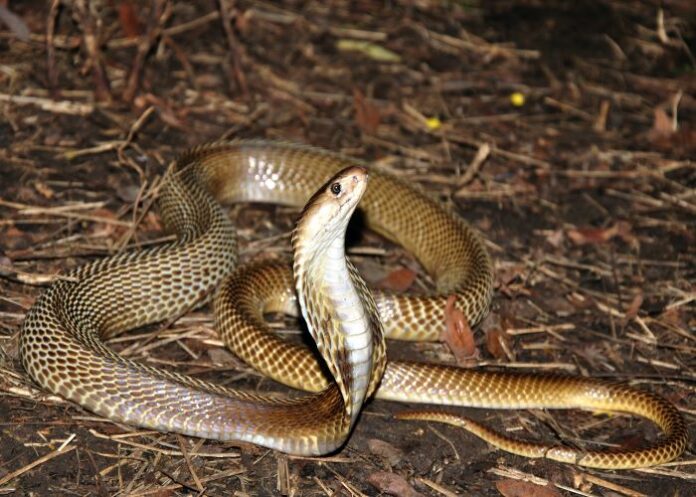Delayed treatment of a rare bacterial infection after a bite from an African spitting cobra could lead to death, say scientists, after examining the case of a two-year-old Namibian boy who was bitten and suffered multiple organ failure and death.
While wound infections after toxic snake bites were common, bites from the spitting cobra usually presented as severe dermonecrosis, spreading in the connective tissue. Primary infections could follow the bite, worsening the effect into infective flesh-eating disease (necrotising fasciitis).
In a South African Medical Journal article, researchers from Namibia and members of the Namibian Snakebite Interest Group examined a case of the flesh-eating disease.
The African spitting cobra is endemic to central and northern Namibia as well as southern Angola, responsible for most of the venomous snakebites seen in these areas. Most bites occurred at night while the victims were asleep, the study said.
In this case, a two-and-a-half-year-old boy was admitted to the emergency department 20 minutes after being bitten by a snake while asleep. The snake was found under his pillow and identified as Naja nigricincta nigricincta (spitting cobra/zebra snake).
On admission, the patient was uncomfortable and restless, with puncture marks on both his upper and lower right eyelids, with blue discolouration and marked swelling. The right side of his face was slightly swollen. Blood pressure, pulse and respiratory rates, oxygen saturation and temperature were within normal limits.
His treatment was altered, and a plastic surgery consultation was sought the next morning. Four days and 12 hours after the bite, the boy went into cardiac arrest and could not be resuscitated.
“One of the most important complications of snakebite with local envenoming is soft-tissue infection. Venom causing cytotoxic injuries with extensive tissue destruction and devitalisation predisposes the wound to bacterial infection from the snake’s indigenous oral flora introduced through the fangs,” researchers said.
“The non-recognition or delayed treatment of necrotising fasciitis (flesh-eating diseases) may, in part, be the cause of the high morbidity and mortality observed in children bitten by N. n. Nigricincta.”
Study details
Fatal infective necrotising fasciitis: Complication following Naja nigricincta nigricincta bite (western barred spitting cobra/zebra snake)
EL Saaiman, PJ (Christo) Buys.
Published in SA Medical Journal Vol 112 No 12
Abstract
Wound infections following cytotoxic snakebites are common. Bites from Naja nigricincta nigricincta (an African spitting cobra) usually present as severe dermonecrosis spreading within the subdermal fascia layer. Primary infections can follow inoculation of the snake’s oral flora during the bite, worsening the dermonecrosis into infective necrotising fasciitis. We report the case of a 2½-year-old boy who presented with infective (Proteus vulgaris) necrotising fasciitis after an N. n. nigricincta bite, resulting in multiple-organ failure and death. A P. vulgaris with the same antibiotic profile was cultured from the mouth of the snake.
See more from MedicalBrief archives:
Snakebite: ‘The world’s biggest hidden health crisis’
Advisory support lifeline for SA snakebite victims
Snake farm manager bitten by black mamba dies from anaphylaxis
Venomics: Developing new medicines out of ancient animal poisons

